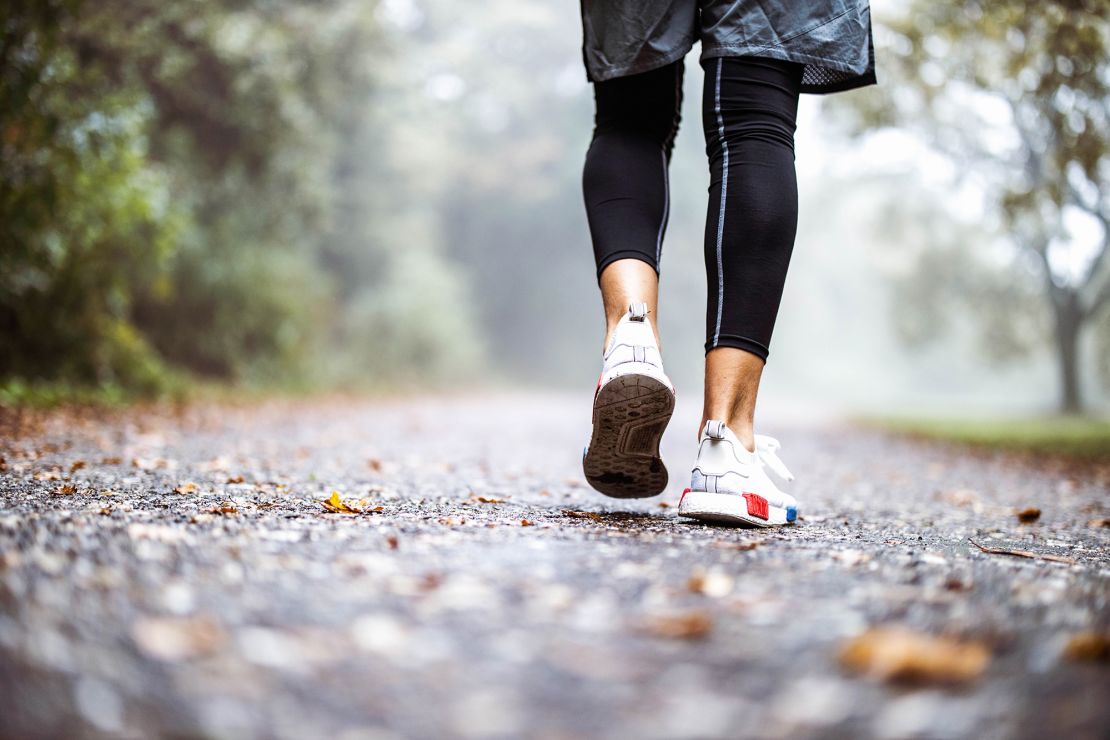Sign up for CNN’s Fitness, But Better newsletter series. Our seven-part guide will help you ease into a healthy routine, backed by experts.
In a busy world, the task of getting more movement into your daily life can often get put on the back burner.
But there’s a reason to rethink your priorities — getting as active as the top 25% of the US population could extend your life by at least five years, according to a new study published Thursday in the British Journal of Sports Medicine.
“I was surprised to find that the loss of life years in the USA due to low levels of physical activity might rival the losses due to smoking and high blood pressure,” said senior study author Dr. Lennert Veerman, professor of public health in the School of Medicine and Dentistry at Griffith University in Australia, via email.

Many studies have examined the connections between physical activity and longevity. In fact, Veerman’s research was inspired by a 2019 study that found the risk of premature death lowered the more physical activity participants did, he said. The activity levels in that study were measured with accelerometers — wearable activity-tracking devices.
The 2019 study, along with others, had already shown that when measured with accelerometry, the relationship between physical activity and early death is about twice as strong when compared with levels gauged by surveys or questionnaires, Veerman said.
“I wondered how that would translate to life expectancy, and how much extra life time a single hour of walking might bring,” Veerman added.
To find out, the authors of the latest study used physical activity data captured by hip accelerometers worn — for at least 10 hours on four or more days — by adults who were age 40 or older when participating in the National Health and Nutrition Examination Survey from 2003 to 2006.
The findings are based on this age group because activity-dependent mortality rates are stable up to age 40; after that, they vary. And the reason for using old activity data is for methodological consistency with the 2019 study, the authors said.
The team then constructed a life table — a way of showing the probabilities of populations living to, or dying by, a certain age. This life table was based on the National Center for Health Statistics’ mortality data for 2017, which the authors assumed was related to the 2003-2006 activity levels.
Based on this information, the authors projected forward how many people from the 2019 US population would survive in the coming years depending on activity levels, and how much extra life they could gain by increasing them.
They found that being as active as the least active quartile of the population would lead to a 5.8-year loss in life expectancy for men and women, bringing the expectancy at birth down from around 78 to around 73. And if all Americans over age 40 were as active as the top quartile, life expectancy would be 83.7 years, which is an increase of 5.3 years. Total activity levels in the lowest quartile were equivalent to walking for 49 minutes at roughly 3 miles (4.8 kilometers) per hour daily. Total activity levels in the second-, third- and fourth-highest quartiles were equivalent to 78, 105 and 160 minutes, respectively.
The team also investigated what the potential benefits could be on an individual, rather than population, level — finding that if those who are the least active got an extra 111 minutes of activity per day, they could prolong their life by up to 11 years.
The findings “suggest sort of what we’ve already known, which is that physical activity is pretty critical to improve health outcomes (and) improve longevity,” said Dr. Andrew Freeman, director of cardiovascular prevention and wellness at National Jewish Health in Denver, who wasn’t involved in the study. (Freeman is also a medical adviser for WeWard, an activity-tracking app that also incentivizes users to move by letting them accrue points they can redeem for prizes or charity donations. He hasn’t received any financial compensation.)
Projecting the benefits of more movement
The authors’ modeling method is strong but does have its limitations since it relies on existing data and provides estimates that are largely theoretical, said Dr. Peter Katzmarzyk, associate executive director for population and public health sciences at the Louisiana State University’s Pennington Biomedical Research Center, via email. Katzmarzyk wasn’t involved in the study.
The authors acknowledged there is some evidence that adherence to physical activity guidelines in the United States has improved since the mid-2000s, meaning their projections on life expectancy could be overestimated. The activity levels of the participants in the 2003-2006 study were also measured at just one point in time, which can’t account for changes across their lifetimes.
But researchers have already suggested exactly how movement could be linked to longevity.
“Physical inactivity is associated with the development of several diseases, including heart disease, stroke, diabetes, and several cancers,” Katzmarzyk said. “Being physically active reduces your risk of developing these conditions and dying from them.”
Seizing opportunities to move
If the idea of becoming more active seems daunting, know that the activity levels of participants in the 2003-2006 study weren’t all from exercise. They wore trackers on their hips for at least 10 waking hours for multiple days, which means the devices captured movements necessary for day-to-day life, too.
Find more moments to move throughout your day. While your food’s heating up, do some squats or take a lap around your work building instead of scrolling through social media. When you’re running errands, park as far away from stores as possible. Getting coffee with a friend? Catch up during a walk in the park instead of sitting in the coffee shop. Standing desks or desk treadmills can be great to have at work, Freeman said.
MORE: Exercise quiz: Find the best workouts for you
Adults need at least 150 to 300 minutes of moderate aerobic activity or 75 to 150 minutes of vigorous aerobic exercise per week, according to the World Health Organization. Every movement counts, Veerman said, so don’t count yourself out if you don’t meet the guidelines.
The study found a diminishing returns effect, so exercising for 23 hours a day doesn’t mean you’ll live forever, Freeman said. There is such a thing as too much activity.
Additionally, “the authors’ points about enhancing the pedestrian infrastructure … are critical,” said Freeman, who added that patients returning from trips to Europe often tell him they walked 10,000 or 20,000 steps daily.
“We need to figure out how to do that here in the States,” he said, “because our expenditures in health care are just completely unsustainable.”
Reducing dependence on cars requires collective action and long-term planning, but everyone can advocate for this change, and some people are already positioned to help make it happen, Veerman said.







